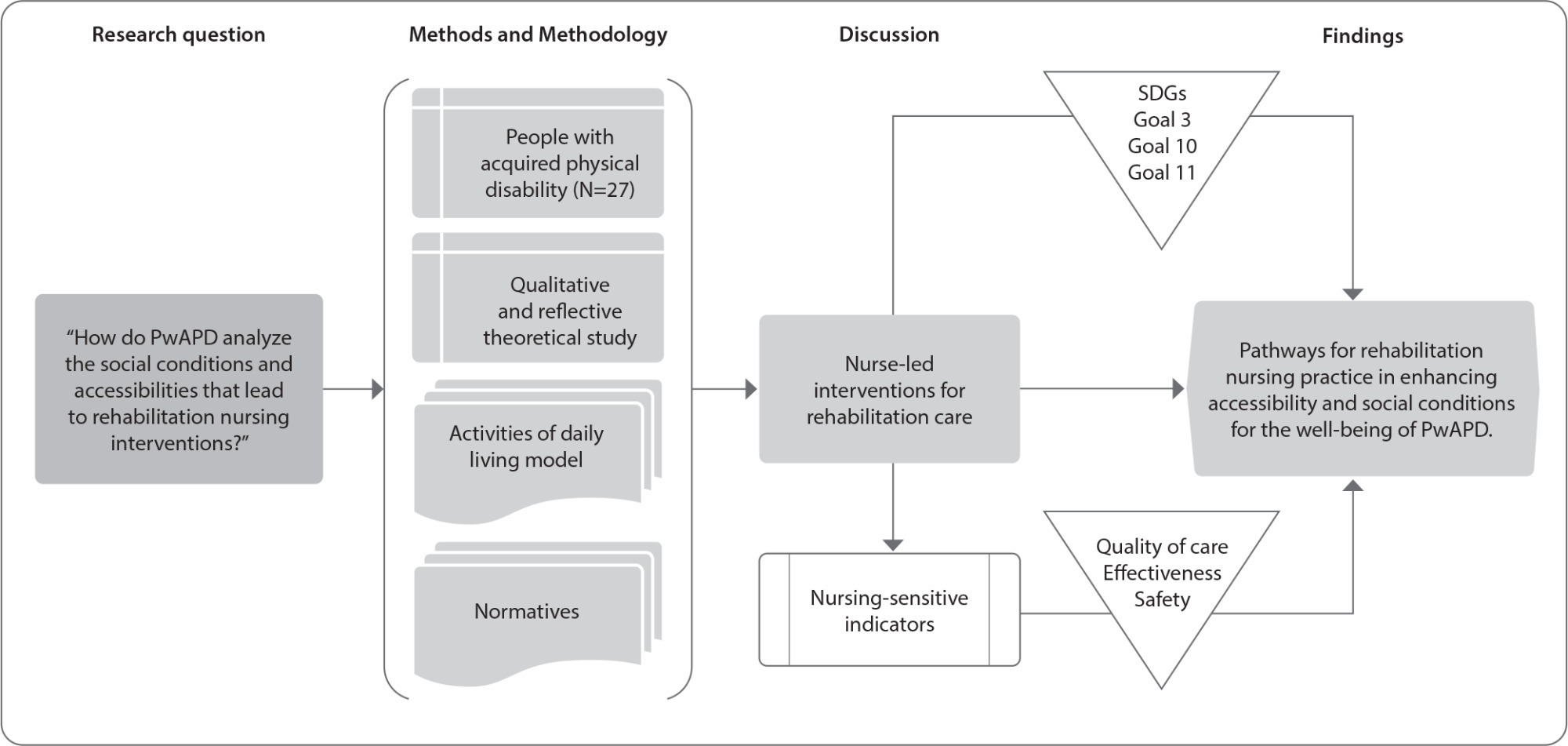-
ORIGINAL ARTICLE12-08-2024
Initial nipple damages in breastfeeding women: analysis of photographic images and clinical associations
Revista Brasileira de Enfermagem. 2024;77(1):e20220773
Abstract
ORIGINAL ARTICLEInitial nipple damages in breastfeeding women: analysis of photographic images and clinical associations
Revista Brasileira de Enfermagem. 2024;77(1):e20220773
DOI 10.1590/0034-7167-2022-0773
Views0See moreABSTRACT
Objective:
to analyze the initial nipple damage degree by breastfeeding practice and to associate findings with clinical manifestations of breastfeeding women.
Methods:
a retrospective, cross-sectional study with primary data and photographic images database from two randomized clinical trials. Photographic images were analyzed by two independent evaluators using the Nipple Trauma Score. For analysis, the chi-square, Mann-Whitney tests and Kappa coefficient were applied.
Results:
115 breastfeeding women and their respective 186 photographic images were analyzed. The degree of agreement of evaluators using the Nipple Trauma Score was 93.6%. The nipple pain score during breastfeeding was moderate and compromised more than 25% of the nipple surface area.
Conclusions:
assistance to breastfeeding women should prioritize nipple pain intensity instead of the nipple damage size.
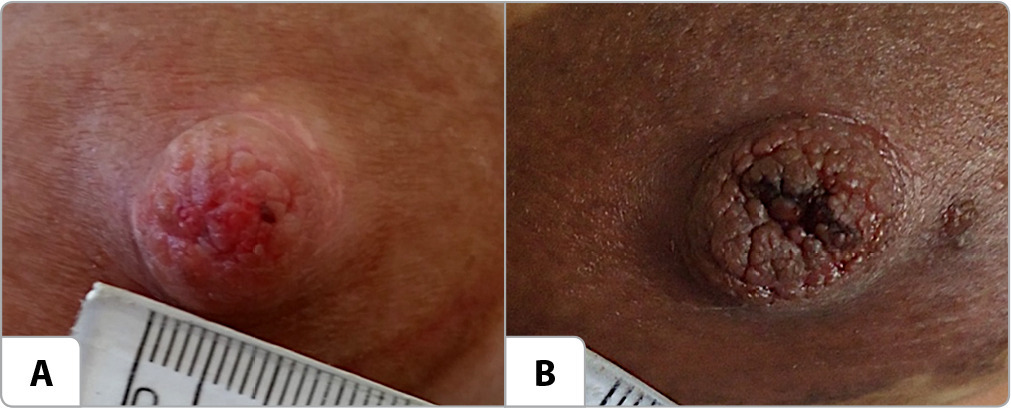
-
ORIGINAL ARTICLE12-08-2024
Safe practices for bed bathing in the intensive care unit: validation of a checklist
Revista Brasileira de Enfermagem. 2024;77(1):e20230135
Abstract
ORIGINAL ARTICLESafe practices for bed bathing in the intensive care unit: validation of a checklist
Revista Brasileira de Enfermagem. 2024;77(1):e20230135
DOI 10.1590/0034-7167-2023-0135
Views0See moreABSTRACT
Objective:
To validate a checklist for safe bathing in critically ill patients.
Methods:
This is a methodological and quantitative study. Researchers developed a checklist for safe bathing in critically ill patients consisting of 41 items, which were submitted to the apparent and content validation process, evaluated by eleven judges, and interobserver reliability. For reliability analysis, the instrument was applied in 54 bed bath procedures in the ICU; Kappa and CHF tests were used.
Results:
In the apparent and content validation, adjustments were made according to the judges’ suggestions. Kappa values ranged from moderate to almost perfect (0.462 to 0.962), and, in some items, there was 100% agreement; the reliability of the instrument was excellent (ICC = 0.962).
Conclusion:
The instrument proved to be dependable and easy to apply. Its use will contribute to safe bed bathing and subsidize interventions aimed at increasing the quality of care.
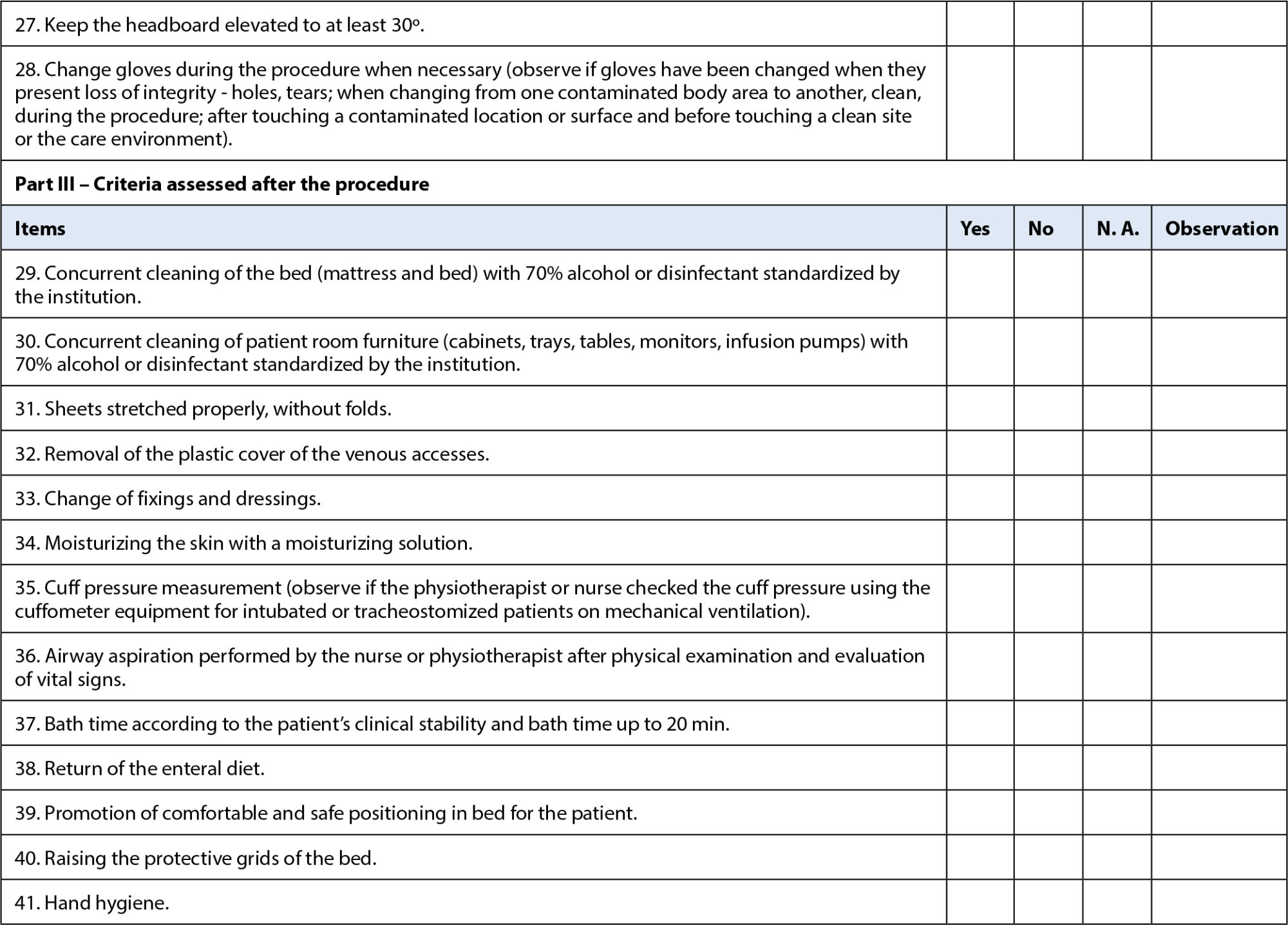
-
REVIEW11-29-2024
Assessment of knowledge in oncology about care for transgender people: a scoping review
Revista Brasileira de Enfermagem. 2024;77:e20230532
Abstract
REVIEWAssessment of knowledge in oncology about care for transgender people: a scoping review
Revista Brasileira de Enfermagem. 2024;77:e20230532
DOI 10.1590/0034-7167-2023-0532
Views0See moreABSTRACT
Objective:
to identify evidence available in the literature on instruments and methodologies used to assess healthcare professionals’ knowledge about cancer care for the transgender population.
Methods:
a scoping review was conducted in seven databases, including studies that answered the question: what is the healthcare professionals’ level of knowledge about cancer care for the transgender population?
Results:
forty-one articles were selected that dealt specifically with healthcare professionals’knowledge in relation to care for the LGBTQIAPN+ population, especially the transgender population. Eighteen studies assessed patients’ perceptions of professionals’knowledge, whereas other studies used their own assessment tools, considering the global context of LGBTQIAPN+ health.
Conclusions:
there is no tested and validated instrument that assesses the knowledge about the transgender population’s oncological health, highlighting the need to construct and validate an instrument focused on this population’s needs.
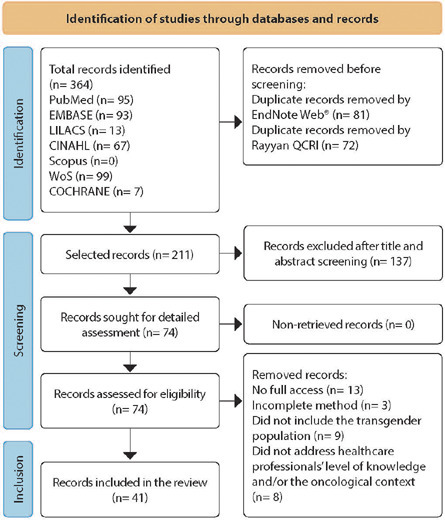
-
ORIGINAL ARTICLE11-29-2024
Sleep quality of vulnerable elderly people: associated factors
Revista Brasileira de Enfermagem. 2024;77:e20230283
Abstract
ORIGINAL ARTICLESleep quality of vulnerable elderly people: associated factors
Revista Brasileira de Enfermagem. 2024;77:e20230283
DOI 10.1590/0034-7167-2023-0283
Views0See moreABSTRACT
Objective:
To identify factors associated with poor sleep quality in elderly dependent individuals in social vulnerability.
Method:
Cross-sectional study with 59 elderly dependent individuals assisted by Family Health Units in São Carlos/SP. The following tools were used: Katz Index, Lawton and Brody Scale, Pittsburgh Sleep Quality Index, Addenbrooke’s Cognitive Examination Revised, Fried’s Frailty Phenotype, Geriatric Depression Scale (15 items), Perceived Stress Scale, Family APGAR, Social Support Scale from the Medical Outcomes Study, and World Health Organization Quality of Life, abbreviated and “old” versions.
Results:
The majority of participants were women (52.5%), aged 60-74 years (71.1%), and had poor sleep quality (76.2%). Stress (OR=1.12; 95%CI=1.02-1.22) and polypharmacy (OR=7.39; 95%CI=1.22-44.73) increased the chances of poor sleep quality, while physical activity decreased these chances (OR=0.15; 95%CI=0.02-0.79).
Conclusion:
Stress and polypharmacy are associated with poor sleep quality in elderly dependent individuals.
-
REVIEW11-22-2024
Transition to family parenting in the face of the first child: a scoping review
Revista Brasileira de Enfermagem. 2024;77(5):e20230487
Abstract
REVIEWTransition to family parenting in the face of the first child: a scoping review
Revista Brasileira de Enfermagem. 2024;77(5):e20230487
DOI 10.1590/0034-7167-2023-0487
Views1See moreABSTRACT
Objectives:
to identify and summarize the elements that characterize the family transition process in relation to the first child.
Methods:
a scoping review was carried out based on JBI methodology, in six databases, following the Preferred Reporting Items for Systematic reviews and Meta-Analyses extension for Scoping Reviews checklist.
Results:
ten articles were included with factors characterizing the transition, such as hindering/facilitating conditions that influence the process, important support structures in adaptation and strategies/responses used in the transition process.
Final Considerations:
elements characterizing the transition process in relation to the first child were identified. However, no theoretical explanation for this was identified. Further research should be carried out to obtain a deeper understanding of this process.
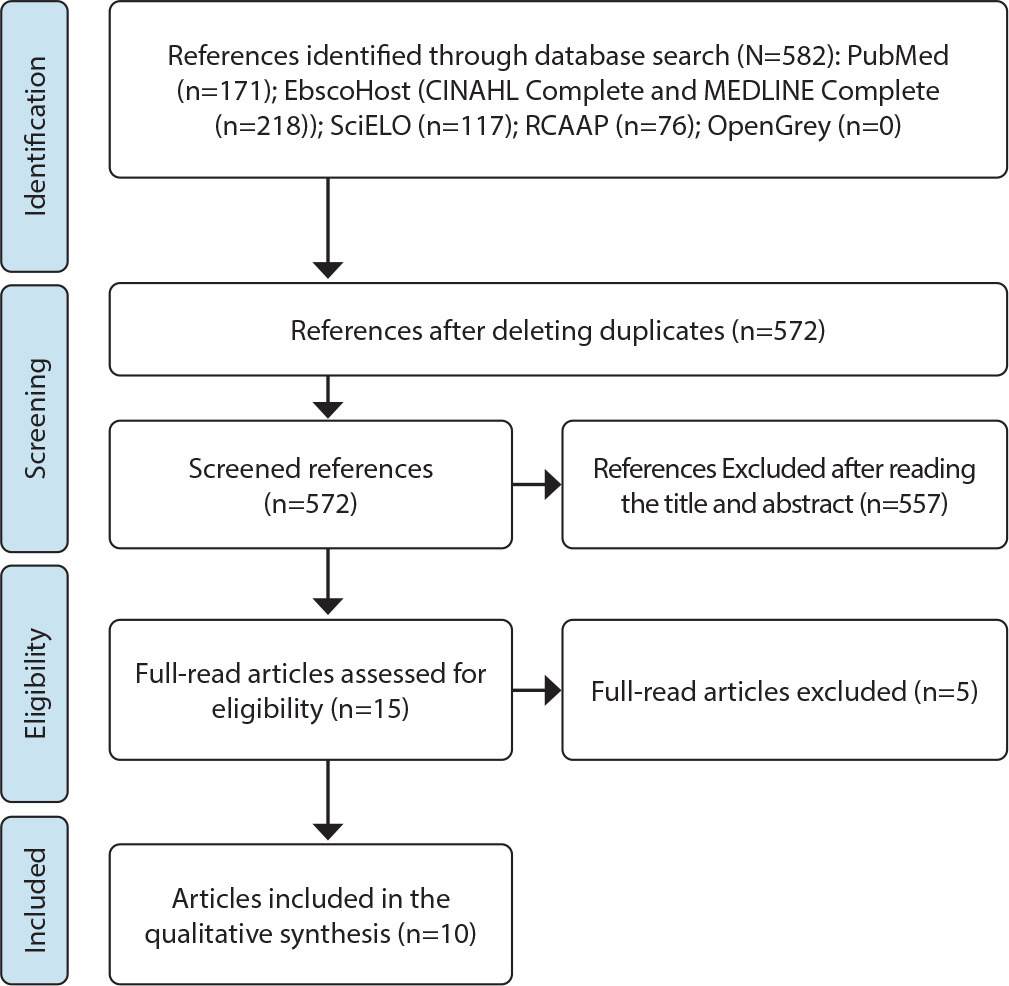
-
11-22-2024
Social Technology in the Prevention of Adolescent Violence: documentary production
Revista Brasileira de Enfermagem. 2024;77(5):e20230298
Abstract
Social Technology in the Prevention of Adolescent Violence: documentary production
Revista Brasileira de Enfermagem. 2024;77(5):e20230298
DOI 10.1590/0034-7167-2023-0298
Views0See moreABSTRACT
Objective:
To report the development of a technological innovation in the form of a documentary, aimed at disseminating actions for preventing violence against adolescents within the context of Primary Health Care.
Methods:
The documentary was developed through action research and interventions with adolescents in the territory of a Health Unit, conducted between 2020 and 2022, using Social Technology as both an action strategy and a conceptual reference.
Results:
The Social Technology proposal, created through workshops and seminars, resulted in a documentary focusing on violence prevention, involving 48 adolescents. The documentary’s script, collectively developed, portrays a soccer match between teams symbolizing peace and violence, with peace ultimately prevailing. The documentary is six minutes long.
Final Considerations:
The documentary has proven to be an effective Social Technology tool among adolescents, as it fosters critical thinking, is accessible, has potential for digital dissemination, and appeals to the target audience.
-
ORIGINAL ARTICLE11-22-2024
Prevalence of prescription and effectiveness of analgesia for treating vaginal delivery pain
Revista Brasileira de Enfermagem. 2024;77(5):e20230327
Abstract
ORIGINAL ARTICLEPrevalence of prescription and effectiveness of analgesia for treating vaginal delivery pain
Revista Brasileira de Enfermagem. 2024;77(5):e20230327
DOI 10.1590/0034-7167-2023-0327
Views0See moreABSTRACT
Objectives:
to assess pain management during labor.
Methods:
a cross-sectional study was carried out by reviewing medical records and conducting postpartum interviews. Prevalence and effectiveness of analgesia were assessed.
Results:
the prevalence of non-pharmacological analgesia was 61.86% of 215 women in labor in Obstetric Center and 82.51% of 62 in midwife-led unit. Prevalence of severe pain, on the Visual Analogue Scale, before and after non-pharmacological analgesia, was from 92.16% to 64.04% (p=0.00) in Obstetric Center and from 85.96% to 52.63% (p=0.01) in midwife-led unit. Prevalence of pharmacological analgesia in Obstetric Centers was 15.81%, with no variation in severe pain (p=0.57). Patients’ request for analgesia was associated with education (p=0.00) and pain intensity (p=0.02).
Conclusions:
non-pharmacological analgesia improved pain intensity. Prevalence of pharmacological analgesic prescription was lower than that identified in developed countries. Pain management needs to consider the preferences and needs of women in labor.
-
EXPERIENCE REPORT01-01-2018
Clinical and epidemiological teaching of dengue through simulated practice
Revista Brasileira de Enfermagem. 2018;71(2):451-456
Abstract
EXPERIENCE REPORTClinical and epidemiological teaching of dengue through simulated practice
Revista Brasileira de Enfermagem. 2018;71(2):451-456
DOI 10.1590/0034-7167-2016-0503
Views2See moreABSTRACT
Objective:
to describe the experience of clinical teaching on dengue and the practice of epidemiological surveillance using problematization methodology.
Method:
report of experience on educational activity with undergraduate nursing students, held in March 2016, at a public university in the city of São Paulo, conceived in four stages: dialogic lecture, active search of Aedes aegypti, case study and simulation of nursing consultation to individuals with dengue.
Results:
The activity allowed to retrieve previous knowledge about the disease, respond to exercises that addressed different clinical situations and epidemiological surveillance, including in situ evaluation of possible mosquito outbreaks, and discuss the need to expand prevention and health of the individual and the community, the impact of the media in the dissemination of cases and the coping difficulties experienced in the different levels of attention.
Conclusion:
the methodology adopted enabled qualified training of students to cope with dengue.

-
ORIGINAL ARTICLE07-18-2022
Beliefs, knowledge, actions of nursing techniques in breastfeeding in pain management in immunization
Revista Brasileira de Enfermagem. 2022;75(6):e20210546
Abstract
ORIGINAL ARTICLEBeliefs, knowledge, actions of nursing techniques in breastfeeding in pain management in immunization
Revista Brasileira de Enfermagem. 2022;75(6):e20210546
DOI 10.1590/0034-7167-2021-0546
Views1See moreABSTRACT
Objective:
Understand the beliefs, knowledge, and actions of nursing technicians on breastfeeding as a form of non-pharmacological intervention to relieve pain in newborns and infants during immunization.
Methods:
Qualitative study carried out through semi-structured interviews with nine nursing technicians from three Basic Health Units in a city in the state of São Paulo. The theoretical approach of the Belief Model and the methodological framework of Thematic Analysis supported this study.
Results:
Three themes originated: Beliefs, Knowledge, and Actions of nursing technicians.
Final considerations:
Despite knowledge about the benefits of breastfeeding as the most effective method for relieving pain in newborns and infants during vaccination, their restrictive beliefs overrode the evidence, leading them to act in ways that discourage or prevent the mother from breastfeed during vaccination. Formal training is recommended to align with current evidence-based practices.
-
REVIEW12-08-2023
Educational technologies for accident prevention due to falls in childhood: a scoping review
Revista Brasileira de Enfermagem. 2023;76:e20220807
Abstract
REVIEWEducational technologies for accident prevention due to falls in childhood: a scoping review
Revista Brasileira de Enfermagem. 2023;76:e20220807
DOI 10.1590/0034-7167-2022-0807
Views2See moreABSTRACT
Objectives:
to map evidence on educational technology use for accident prevention due to falls in childhood.
Methods:
a scoping review, carried out in October and November 2022, in the MEDLINE, Web of Science, BDENF and CINAHL databases and LILACS bibliographic index. There was no delimitation of language or time. Data were extracted and analyzed descriptively by two independent researchers. The research protocol was registered in the Open Science Framework.
Results:
twenty-six studies were selected. Booklets, pamphlets and leaflets were the most used technologies, presenting health services as the most frequent environment to develop research on fall prevention. The technologies developed were important outcomes: increased knowledge of children, family members, caregivers, health and education professionals.
Conclusions:
educational technology use makes it possible to increase knowledge, adopt safe practices and reduce falls.

-
REVIEW03-15-2024
Resources for health literacy among caregivers of prematurely born children: a scoping review
Revista Brasileira de Enfermagem. 2024;77(1):e20230062
Abstract
REVIEWResources for health literacy among caregivers of prematurely born children: a scoping review
Revista Brasileira de Enfermagem. 2024;77(1):e20230062
DOI 10.1590/0034-7167-2023-0062
Views1See moreABSTRACT
Objectives:
to map the available evidence on resources used to promote health literacy among caregivers of prematurely born children during outpatient follow-up.
Methods:
the Joanna Briggs Institute’s scope review protocol was utilized. The search encompassed six databases, incorporating studies from 2012 to 2022.
Results:
the three included publications revealed that the resources employed are: mobile applications, phone calls, individual counseling, videos, educational pamphlets, and group discussions. Implementing an education protocol during the transition home enhances scientifically grounded health promotion rates.
Conclusions:
there is limited literature addressing the health literacy of these caregivers. The nursing team plays a crucial role in health education and in developing resources applicable to these families.

-
ORIGINAL ARTICLE01-13-2024
Social representations of oncologic surgery for patients with cancer
Revista Brasileira de Enfermagem. 2024;77(6):e20230273
Abstract
ORIGINAL ARTICLESocial representations of oncologic surgery for patients with cancer
Revista Brasileira de Enfermagem. 2024;77(6):e20230273
DOI 10.1590/0034-7167-2023-0273
Views2See moreABSTRACT
Objectives:
to analyze the social representations of patients with cancer regarding oncologic surgery.
Methods:
a qualitative study based on Social Representation Theory was conducted with 126 participants between October 2021 and May 2022 in a public hospital in Rio de Janeiro. A characterization questionnaire, free evocations of the inducing term “surgery”, and semi-structured interviews with 60 participants were applied. Data were analyzed using Microsoft Excel® and IRaMuTeQ.
Results:
the central core of the representation is composed of fear, cure, hope, and removing the disease. The analysis of interviews resulted in six classes that highlight the social changes caused by treatment as well as the need for a support network to cope with the surgical process.
Final Considerations:
the representations reflect fear and hope towards the procedure and the desire to remove the disease, thus translating the cure through surgery.

-
ORIGINAL ARTICLE01-13-2024
Nurses’ perspectives on the use of telemonitoring in the management of people with diabetes and hypertension
Revista Brasileira de Enfermagem. 2024;77(6):e20230481
Abstract
ORIGINAL ARTICLENurses’ perspectives on the use of telemonitoring in the management of people with diabetes and hypertension
Revista Brasileira de Enfermagem. 2024;77(6):e20230481
DOI 10.1590/0034-7167-2023-0481
Views3See moreABSTRACT
Objectives:
to understand the perspective of nurses on the use of telemonitoring in the management of people with type 2 diabetes mellitus and arterial hypertension in primary care.
Methods:
this qualitative research involved sixteen nurses from eight municipalities in Paraná. Data were collected between November 2022 and January 2023 through inperson or remote interviews, which were audio-recorded and subjected to content analysis.
Results:
according to the nurses, telemonitoring enhances users’ knowledge about these conditions, communication and connection with the team, and productivity. However, the lack of electronic resources and equipment, high staff turnover, low user adherence, and the limited availability of professional time present significant challenges.
Final Considerations:
the effective implementation and operation of telemonitoring in the management of people with diabetes and hypertension involve both potential benefits and barriers. It is essential to have the availability of human and technological resources, managerial support, and the commitment of professionals and users.
-
ERRATUM01-13-2024
ERRATUM
Revista Brasileira de Enfermagem. 2024;77(6):e2024n6e08
Abstract
ERRATUMERRATUM
Revista Brasileira de Enfermagem. 2024;77(6):e2024n6e08
DOI 10.1590/0034-7167.20247706e08
Views2In the article “Brazilian nursing specific situation, middle and micro-range theories: a bibliometric study”, with DOI number: , published in Revista Brasileira de Enfermagem, 2024;77(4):e20230520, Chart 1:Where it read:[…]See more -
ORIGINAL ARTICLE09-29-2022
Palliative care production for health professionals in the context of home care
Revista Brasileira de Enfermagem. 2022;75(1):e20210030
Abstract
ORIGINAL ARTICLEPalliative care production for health professionals in the context of home care
Revista Brasileira de Enfermagem. 2022;75(1):e20210030
DOI 10.1590/0034-7167-2021-0030
Views1See moreABSTRACT
Objectives:
to analyze palliative care production developed by health professionals to home care patients.
Methods:
this is an exploratory study, with a qualitative approach, using the transpersonal care theoretical framework. Thirteen interviews were conducted with health professionals and 18 observations were conducted on different cases. Content analysis was performed using MAXQDA©.
Results:
actions performed: maintenance and follow-up measures to people eligible for palliative care, in acts of dialogue and “listening” to caregivers and users, conducting guidelines for the care and self-care process, performing technical procedures, delivery of materials, referrals and medical prescriptions to users.
Final Considerations:
it is perceived the need for advances in the implementation of government policies in Brazil that insert palliative care into the Health Care Network through educational, managerial and care actions that ensure human dignity, thus allowing the development of these and other palliative care interventions.
-
ORIGINAL ARTICLE06-10-2022
Effects of the economic recession on suicide mortality in Brazil: interrupted time series analysis
Revista Brasileira de Enfermagem. 2022;75:e20210778
Abstract
ORIGINAL ARTICLEEffects of the economic recession on suicide mortality in Brazil: interrupted time series analysis
Revista Brasileira de Enfermagem. 2022;75:e20210778
DOI 10.1590/0034-7167-2021-0778
Views0See moreABSTRACT
Objectives:
to analyze trends in suicide rates in Brazil in the period before and after the start of the economic recession.
Methods:
interrupted time series research using national suicide data recorded in the period between 2012 and 2017 with socioeconomic subgroups analyses. Quasi-Poisson regression model was employed to analyze trends in seasonally adjusted data.
Results:
there was an abrupt increase in the risk of suicide after economic recession in the population with less education (12.5%; RR = 1.125; 95%CI: 1.027; 1.232) and in the South Region (17.7%; 1.044; 1.328). After an abrupt reduction, there was a progressive increase in risk for the black and brown population and for those with higher education. In most other population strata, there was a progressive increase in the risk of suicide.
Conclusions:
the Brazilian economic recession caused different effects on suicide rates, considering social strata, which requires health strategies and policies that are sensitive to the most vulnerable populations.
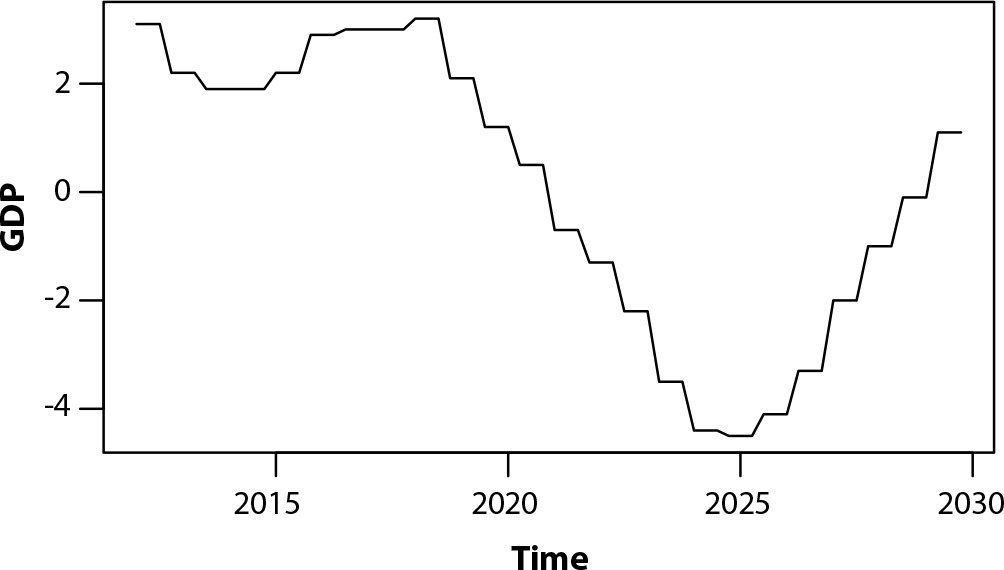
-
ORIGINAL ARTICLE08-19-2019
Health in the school: perceptions of being adolescent
Revista Brasileira de Enfermagem. 2019;72(4):964-972
Abstract
ORIGINAL ARTICLEHealth in the school: perceptions of being adolescent
Revista Brasileira de Enfermagem. 2019;72(4):964-972
DOI 10.1590/0034-7167-2018-0433
Views0See moreABSTRACT
Objective:
To understand adolescents’ perceptions on school health.
Method:
Qualitative and descriptive research grounded on Maurice Merleau-Ponty’s phenomenology, which was developed with 90 adolescent students from a federal school of the state of Rio de Janeiro. Data were produced by gathering answers to the following question: what is your perception on school health? Those who chose to write their answer to the guiding question deposited the manuscripts in polls.
Results:
School health is linked to hygienist practices and to the hegemonic assistentialist model. Nevertheless, we assigned senses and meanings to the practice of physical activity and health education by integrating and expanding behavioral strategies and healthy habits.
Final considerations:
a healthy school environment implies the protagonism of adolescents in school health promotion actions.
-
01-20-2021
Psychic burden development related to nursing work in Psychosocial Care Centers
Revista Brasileira de Enfermagem. 2021;74:e20200114
Abstract
Psychic burden development related to nursing work in Psychosocial Care Centers
Revista Brasileira de Enfermagem. 2021;74:e20200114
DOI 10.1590/0034-7167-2020-0114
Views0See moreABSTRACT
Objective:
to investigate the factors that are present in the work environment of the nursing team and that contribute to emergence of psychic burden in Psychosocial Care Centers III.
Methods:
this is a descriptive and qualitative study carried out in three services located in Paraíba State. Data were obtained from an interview with a semi-structured script, and textual content was treated using the software Interface de R pour Analyzes Multidimensionnelles de Textes et de Questionneires.
Results:
the factors that trigger psychic burden arise primarily from pace of work, precarious physical structure, work with users in mental distress, lack of management support, insufficient multidisciplinary team and lack of clinical supervision.
Conclusion:
the difficulties faced by nursing professionals in the work environment cause suffering at work and hinder the effectiveness and, consequently, the quality of nursing care.

-
ORIGINAL ARTICLE04-22-2020
Beliefs related to insulin use in people with Type 2 Diabetes Mellitus
Revista Brasileira de Enfermagem. 2020;73(3):e20190029
Abstract
ORIGINAL ARTICLEBeliefs related to insulin use in people with Type 2 Diabetes Mellitus
Revista Brasileira de Enfermagem. 2020;73(3):e20190029
DOI 10.1590/0034-7167-2019-0029
Views0See moreABSTRACT
Objectives:
to identify the beliefs of people with Type 2 Diabetes Mellitus related to insulin use.
Methods:
a descriptive, cross-sectional, quantitative-qualitative study based on Theory of Planned Behavior and performed with 32 participants using insulin. The data were analyzed and grouped into categories by beliefs similarity, counted from the frequencies.
Results:
118 behavioral, 60 normative and 97 control beliefs were issued. Among the behavioral beliefs, there was an advantage in keeping the diabetes under control and disadvantage, the pain of being pierced by the application of insulin. Regulations highlighted the children as referents who support the treatment. In control beliefs, it was observed that the application of insulin appears as easiness and difficulty to the treatment.
-
ORIGINAL ARTICLE08-20-2022
Innovative actions developed by nurses in primary health care
Revista Brasileira de Enfermagem. 2022;75(1):e20200782
Abstract
ORIGINAL ARTICLEInnovative actions developed by nurses in primary health care
Revista Brasileira de Enfermagem. 2022;75(1):e20200782
DOI 10.1590/0034-7167-2020-0782
Views0See moreABSTRACT
Objectives:
to understand the work process dimensions related to innovative actions developed by nurses in Primary Health Care.
Methods:
qualitative, descriptive study, developed in Primary Health Care in a city in the Southern Region of Brazil. Seventy-six nurses, who worked in management and assistance, participated in this study through semi-structured interviews. After data processing by IRAMUTEQ software, the textual analysis occurred by descending hierarchical classification.
Results:
forty-two innovative actions, considered by the participants as new ways of working, were identified. There was a predominance of innovative actions related to the Management and Assist dimensions; we noticed the fragility of the actions to contemplate all the nurse’s work process dimensions.
Final Considerations:
the predominance of innovative actions was related to users’ assistance and better conditions in the teamwork process, besides highlighting the role of nurses in the perspective of a new way of working in health services.
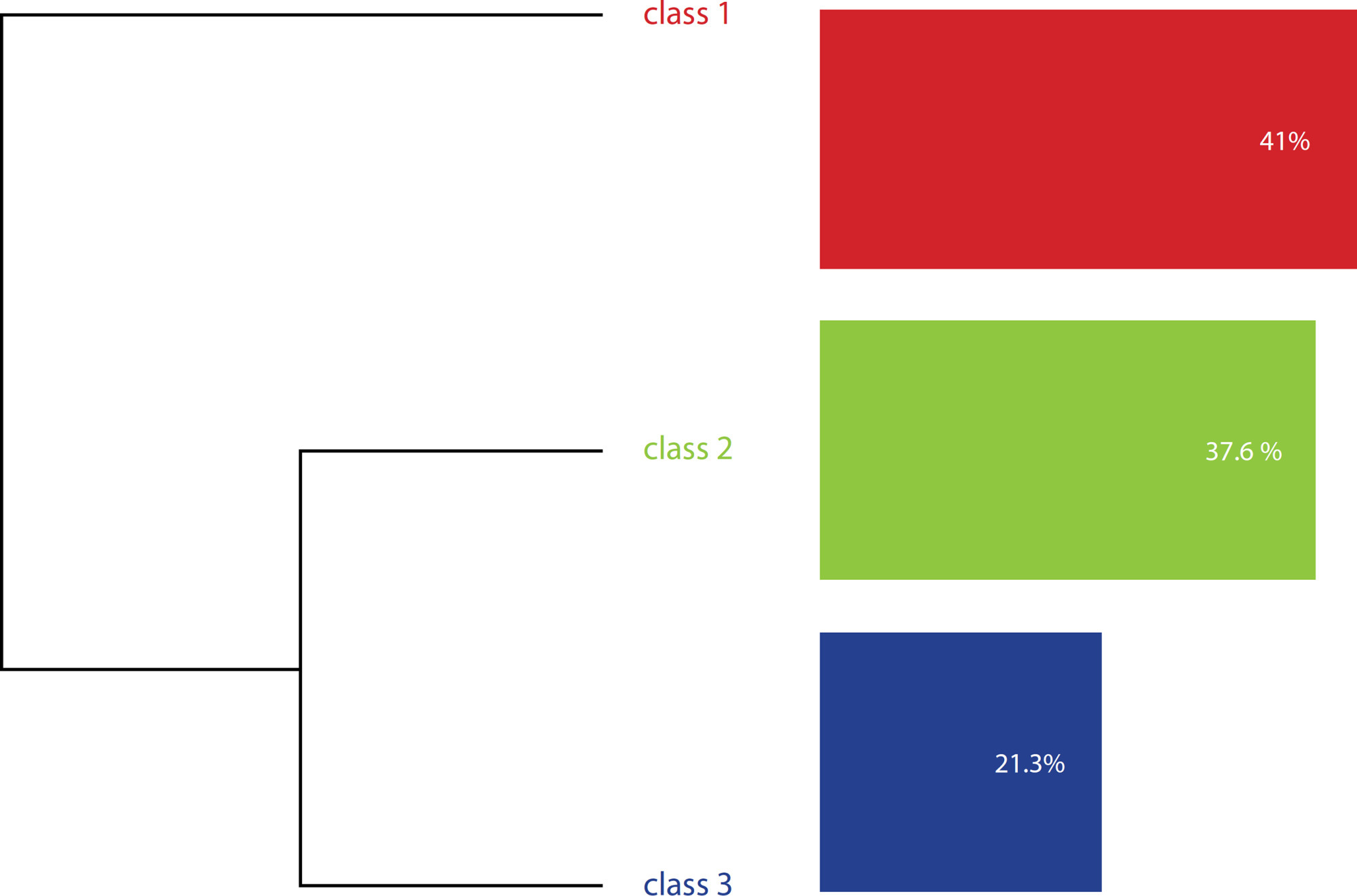
-
REFLECTION02-05-2021
The vulnerability of the family: reflections about human condition
Revista Brasileira de Enfermagem. 2021;74(1):e20190412
Abstract
REFLECTIONThe vulnerability of the family: reflections about human condition
Revista Brasileira de Enfermagem. 2021;74(1):e20190412
DOI 10.1590/0034-7167-2019-0412
Views0See moreABSTRACT
Objectives:
to reflect about the vulnerability of the family, using the book The Human Condition by Hannah Arendt as reference, to better understand how this institution has been structured in today’s world.
Results:
the rupture of assistance relations among family members represents a situation of vulnerability that weakens the family institution, leading to the loss of the assertiveness in the society. Support for the development of human capabilities in families and in the territory provides the benefit of strengthening them to face of vulnerabilities.
Conclusions:
the vulnerability of the family presents itself as a historic milestone, condition on which the family institution was built and organized as a public and private property, putting in evidence the importance to develop a more holistic and integrate care to the people, based on health public policies and social assistance.
-
ORIGINAL ARTICLE02-05-2021
Safe intra-hospital care in context of vulnerability to socio-environmental disasters: implications for nursing
Revista Brasileira de Enfermagem. 2021;74(1):e20190223
Abstract
ORIGINAL ARTICLESafe intra-hospital care in context of vulnerability to socio-environmental disasters: implications for nursing
Revista Brasileira de Enfermagem. 2021;74(1):e20190223
DOI 10.1590/0034-7167-2019-0223
Views0See moreABSTRACT
Objectives:
to analyze the factors involved in safe intra-hospital care, in a context of vulnerability to socio-environmental disasters and their implications for nursing.
Methods:
a cross-sectional study of a descriptive and exploratory nature. Semi-structured interviews were conducted with 49 nursing professionals from a hospital in the mountainous region of the state of Rio de Janeiro (Brazil), which suffered a significant impact from a socio-environmental disaster in January 2011. Data were processed by software IRaMuTeQ.
Results:
aspects related to disaster assistance were presented through a thematic chunk with four classes, through descending hierarchical classification.
Conclusions:
for better nursing response in socio-environmental disasters, in an intra-hospital setting, investments for training and continuing education should be prioritized; adequate provision and provision of human, material and technological resources; psychological support for professionals after such events; appropriation of nursing competencies for the development of advanced practices in disasters and effective risk management.
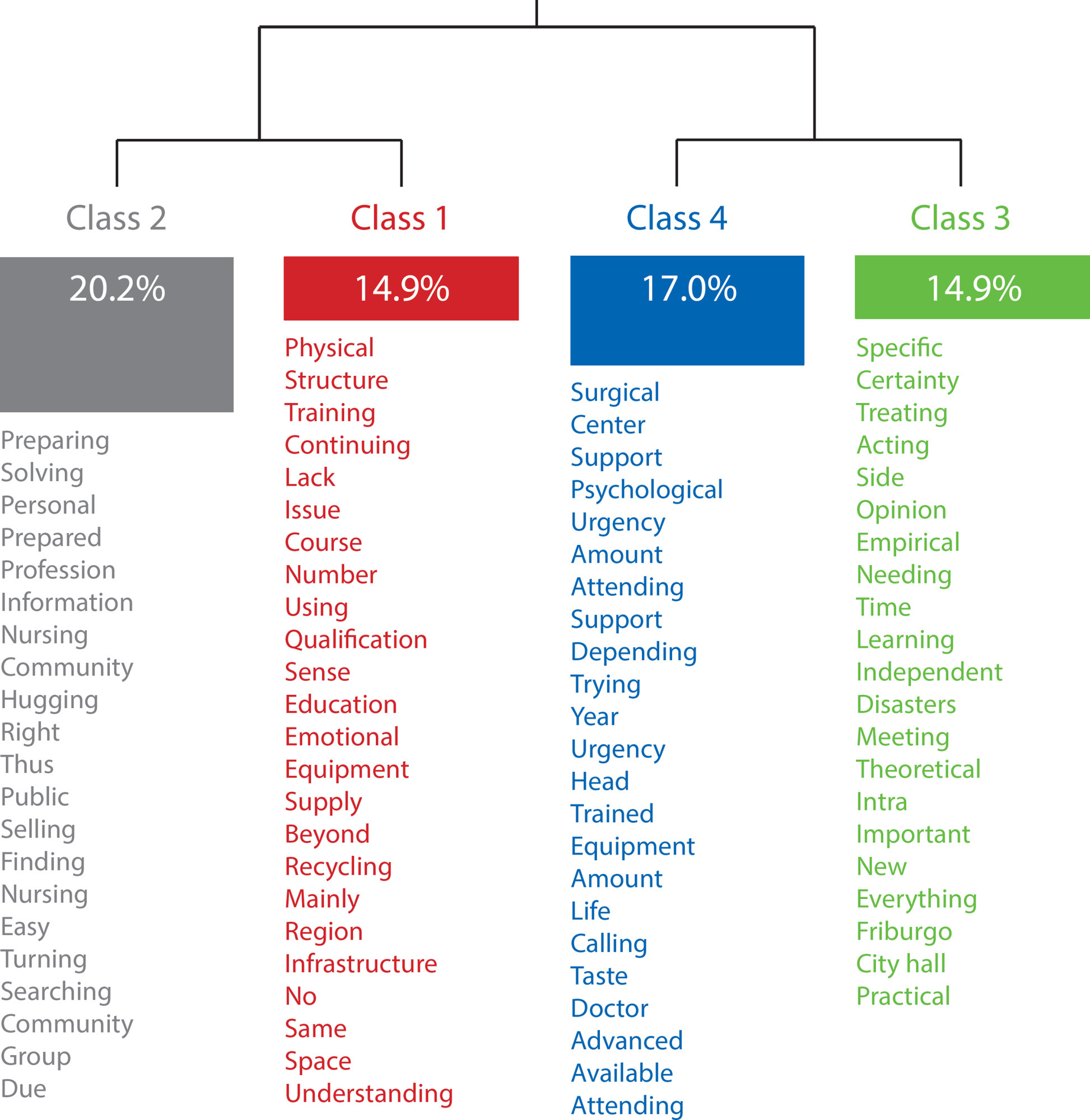
-
REVIEW12-21-2020
Communication between pre-hospital and intra-hospital emergency medical services: literature review
Revista Brasileira de Enfermagem. 2020;73:e20190817
Abstract
REVIEWCommunication between pre-hospital and intra-hospital emergency medical services: literature review
Revista Brasileira de Enfermagem. 2020;73:e20190817
DOI 10.1590/0034-7167-2019-0817
Views1See moreABSTRACT
Objectives:
to analyze, according to the scientific literature, communication strategies in the transfer of cases between pre-hospital and in-hospital services and their contributions to patient safety.
Methods:
this is a literature review study, that is, one that aims to gather and synthesize research results on the subject in a systematic and orderly manner.
Results:
ten articles were published, published between 2010 and 2018, and two points of discussion emerged: use of mnemonics; and barriers to transferring a case.
Conclusions:
studies point to the need to standardize the case transfer process, as well as integrative training of professionals, regular assessment of the teams involved in emergency medical services and the need for research on the subject.
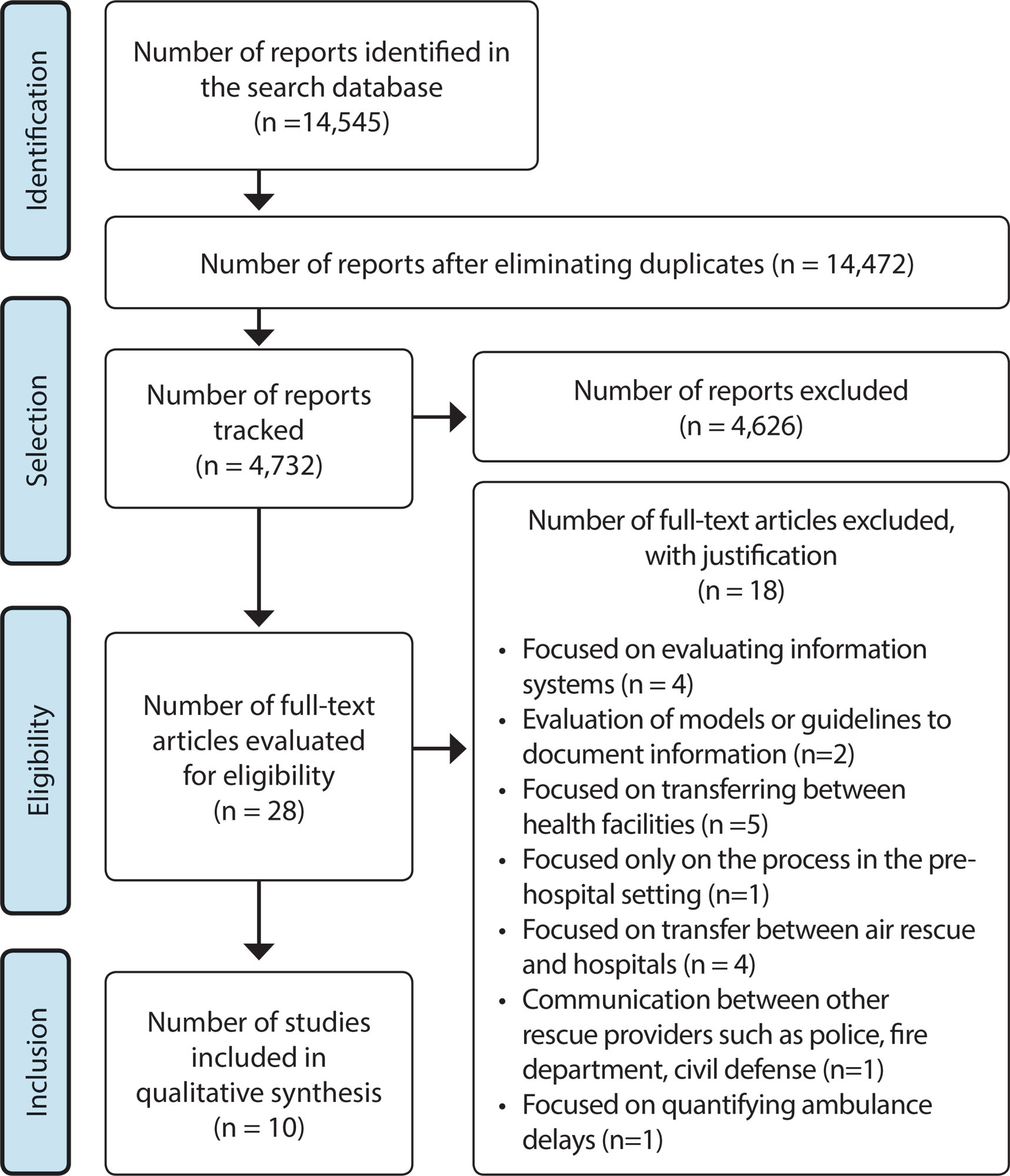
Search
Search in:
Nuvem de Tags
Adolescente (85) Atenção Primária à Saúde (239) COVID-19 (91) Criança (91) Cuidados de Enfermagem (269) Educação em Enfermagem (151) Educação em Saúde (139) Enfermagem (930) Enfermagem Pediátrica (86) Estudantes de Enfermagem (77) Estudos de Validação (131) Família (87) Idoso (208) Promoção da Saúde (99) Qualidade de Vida (104) Saúde do Trabalhador (86) Saúde Mental (145) Saúde Pública (82) Segurança do Paciente (150) Tecnologia Educacional (100)




